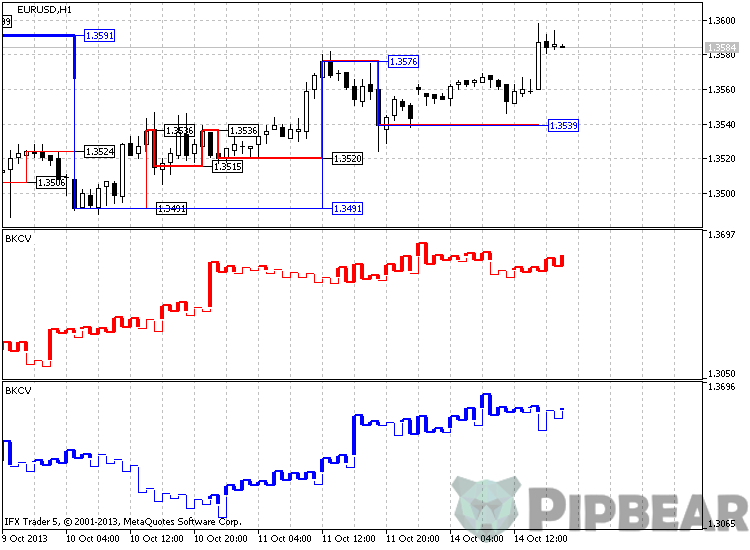Contents
Statistics from ultrasound.money show that Ethereum’s current issuance rate of new coins per annum is 0.014%. Delegated-proof-of-stake is a consensus mechanism, and often also a governance mechanism, that was originally pioneered by Bitshares and has since been adopted in many blockchains. A DPoS chain’s consensus is run by a small number of nodes, called block producers (eg. EOS has 21 block producers). To become a block producer, one must first sign up as a delegate, and invite coin holders to vote for you.

If a single entity accumulated the majority of ether staked to validate new transactions, they could alter the blockchain and steal tokens. Crypto experts also say there is a risk that technical glitches could mar the Merge, and that scammers could take advantage of confusion to steal tokens. This LMD attack vector was closed by updating the fork choice algorithm so that it discards equivocating validators from the fork choice consideration altogether. Equivocating validators also have their future influence discounted by the fork choice algorithm. This prevents the balancing attack outlined above while also maintaining resilience against avalanche attacks. Another important fortification against social layer attacks is a clear mission statement and governance protocol.
Ethereum’s proof-of-stake system is already being tested on the Beacon Chain, launched on December 1, 2020. So far 9,500,000 ETH ($37 billion, in current value) has been staked there. The plan is to merge it with the main Ethereum chain in the next few months. By demanding a significant upfront investment, “proof of something” keeps bad actors from setting up large numbers of seemingly independent virtual nodes and using them to gain influence over the network.

The built-in “carrot and stick” incentive layer protects against most malfeasance, especially for low-stake attackers. A more sophisticated attack can split the honest validator set into discrete groups that have different views of the head of the chain. The attacker waits for their chance to propose a block, and when it arrives they equivocate and propose two. They send one block to half of the honest validator set and the other block to the other half. Meanwhile, the remaining malicious validators hold back their attestations. This can continue indefinitely, with the attacking validators maintaining an even split of validators across the two forks.
PoW blocks that are descendants of any terminal PoW block MUST NOT be imported. This implies that a terminal PoW block will be the last PoW block in the canonical chain. Neither safety nor liveness failures were detected during this period of time. This long period of running without failure demonstrates the sustainability of the beacon chain system and its readiness to become a security provider for the Ethereum Mainnet. Brooke Becher is a Built In staff reporter covering FinTech and blockchain technologies, like crypto and Web3.
Former IT development and consultant, remote team and collaboration expert, PM, CCO, writer, dreamer, idealist looking to collaborate with global teams on a global teal/turquoise organisation. Shawn’s dream is working together openly, to get what writers need and want, and to solve biggest global problems. He is building a collaboration system from the start that everyone can own and define, allowing them to work together, to decide how it works and to their highest ideals. You can earn reward money in proof, but you can lose this by doing acts such as going offline, cheating the system, or failing validation in mining. After completing one whole epoch, the committee is deformed and made again with new and random participants.
Validating the entire history of the chain is not required by the new PoS mechanism. Instead, the sync process in the PoS network relies on weak subjectivity checkpoints, which are historical snapshots shared by peers on the network. This means historical blocks beyond weak subjectivity checkpoint are no longer a requisite for determining the canonical blockchain.
“People purchasing Ether or transacting on the network for the first time may be confused by having to pay several dollars for a simple transaction,” Syed said, in a post-Merge market. While proof of stake significantly reduced Ethereum’s energy usage, gas fees have generally stayed the same. Though historic, the latest update has left room for improvement, potentially to be seen with additional upgrades down the line. Furthermore, each committee is distributed over one time slot, forming 32 committees per each epoch.
On September 15, 2022, the original Ethereum Mainnet merged with the Beacon Chain to exist as one chain. The price of Ethereum has dropped since the merge due to fears of possible regulation. Robot vacuum companies say your images are safe, but a sprawling global supply chain for data from our devices creates risk. In the case of Bitcoin, this ended up putting a handful of big companies in control of the network. Targeted attacks and/or intimidation directed at the developer community. This could lead to voluntary exit of developers and slow down Ethereum’s progress.
One is view-merge, where attesters freeze their view of the fork choice n seconds before the beginning of a slot and the proposer then helps to synchronize the view of the chain across the network. Another potential upgrade is single-slot finality, which protects against attacks based on message timing by finalizing the chain after just one slot. It is worth noting, that proposer boosting alone only defends against “cheap reorgs”, i.e. those attempted by an attacker with a small stake. The authors of this post describe how an attacker with 7% of the stake can deploy their votes strategically to trick honest validators to build on their fork, reorging out an honest block. This attack was devised assuming ideal latency conditions that are very unlikely. The odds are still very long for the attacker, and the greater stake also means more capital at risk and a stronger economic disincentive.
They attest to their block and the remaining honest validators do too creating forks with different target checkpoints. If they timed it just right, they will prevent finality because there will not be a 2/3 supermajority attesting to either fork. Both bouncing and balancing attacks rely upon the attacker having very fine control over message timing across the network, which is unlikely. Nevertheless, defenses are built into the protocol in the form of additional weighting given to prompt messages compared to slow ones. To defend against bouncing attacks the fork-choice algorithm was updated so that the latest justified checkpoint can only switch to that of an alternative chain during the first 1/3 of the slots in each epoch.
Alternatively, in proof-of-stake block proposers are randomly selected — completely removing the requirement for an arms race. There is no way to increase the likelihood that any specific node is chosen to propose a block — so there is no need to consume more and more energy to improve your competitive chances. If you have more hash rate than your competitors you are more likely to win. The end result of this arms race is that PoW miners run as many GPUs as they can at 100% load, 24-hours-a-day.

Since the LMD rule discards the second attestation and keeps only the first for each validator, half the network sees votes for A and none for B, the other half sees votes for B and none for A. The authors describe the LMD rule giving the adversary “remarkable power” to mount a balancing attack. On the honest chain, the inactivity leak would kick in once blocks stopped finalizing.
There are different ways transactions on the blockchain — the software that underpins most crypto — can be verified. In the “proof-of-work” system currently used by Ethereum, what is medikey new transactions are checked by crypto miners. A finality delay attack prevents the network from reaching the necessary conditions finalizing sections of the chain.
The White House administration has gone as far as to float the idea of exploring possible options to limit energy-intensive mining, like bitcoin, if the process doesn’t become greener. Ethereum is the second largest form of cryptocurrency based on market cap, trailing only bitcoin. So when something happens to ethereum, it impacts the entire cryptocurrency space. Something similar happened in 2016, after Ethereum developers rolled back the blockchain to erase a massive hack.
To complete the validation process, each block within a time slot is voted for by one committee of validators, each having a minimum of 128 members. The maximum number of members is 2,048, however, anything more than that is considered redundant, Zomchak indicated. These 128 members are automatically and randomly elected to the committee from the general pool of Ethereum validators, fixed for the epoch duration. To create blocks, verify, and validate all the transactions, you must stake Eth proof. Users in Proof-of-Stake require staking at most minuscule 32 ETH proof to become a validator. Proof of Stake vs. Proof of WorkThe Ethereum proof EH2 upgrades include scaling the Ethereum through the ETH2 upgrade in Proof-of-Stake.
Events having the POS_ prefix in the name are emitted by the new proof-of-stake consensus mechanism. They signify the corresponding assertion that has been made regarding a block specified by the event. The underlying logic of PoS events can be found in the beacon chain specification. On the occurrence of each PoS event the corresponding action that is specified by this EIP MUST be taken.
The consensus mechanism helps developers increase the time required for the computing to corrupt the system, making it easy to control shards as mining. It includes the deposit of those 32ETH to activate the software for validators. The sole responsibility is to add blockchains, stored data, and the average transaction fee and process transactions. Proof-of-Work is based on a consensus model, which requires stable computational power. In Proof-of-Work, computer components are used to solve problems by minors.
When new data is added to the network, the majority of nodes must verify and confirm the legitimacy of the new data based on permissions or economic incentives; these are also called consensus mechanisms. When a consensus is reached, a new block is created and attached to the chain. The reward for validating blocks is no longer fixed, as rewards once were under the prior proof-of-work consensus mechanism. A block’s value now depends on the number of active validators in a network and the total amount of staked funds paid into Ethereum’s protocol. Proof of Work requires increasingly fast computers, significant energy resources, and processes that eventually slow down transaction times as a cryptocurrency network grows. Proof of Stake was developed to improve Proof of Work to conserve computational power, energy to run computers and lessen environmental impact, vulnerability to attacks, and questions about its scalability.
Points are earned in the form of coins by stacking hardware & by use of computational power. If Ethereum were to be considered as a security, then ether and every application on the blockchain would have to get registered with the SEC. It would also mean that Ethereum was https://cryptolisting.org/ trading as an unregistered security for a long time which could lead to some hefty fines for Ethereum and possibly the platforms that allowed trading. Registered securities must disclose their management team, provide financial information and share potential risks.